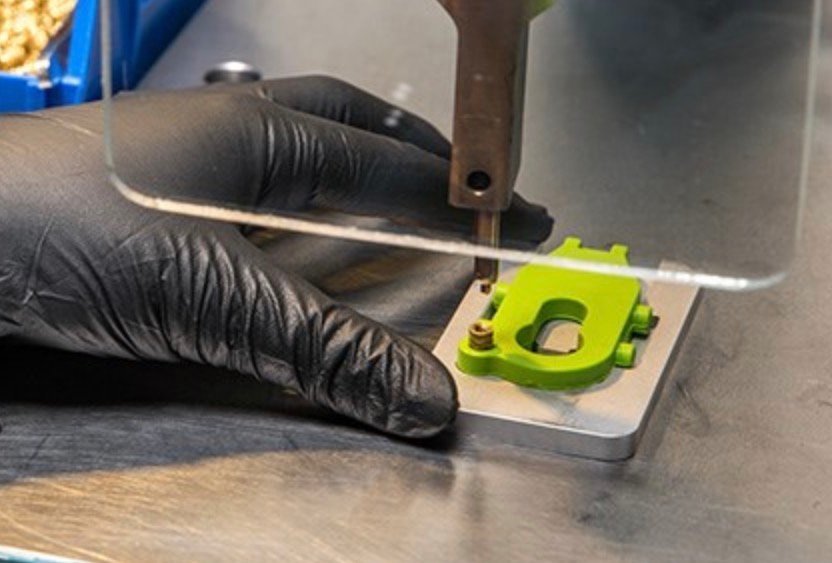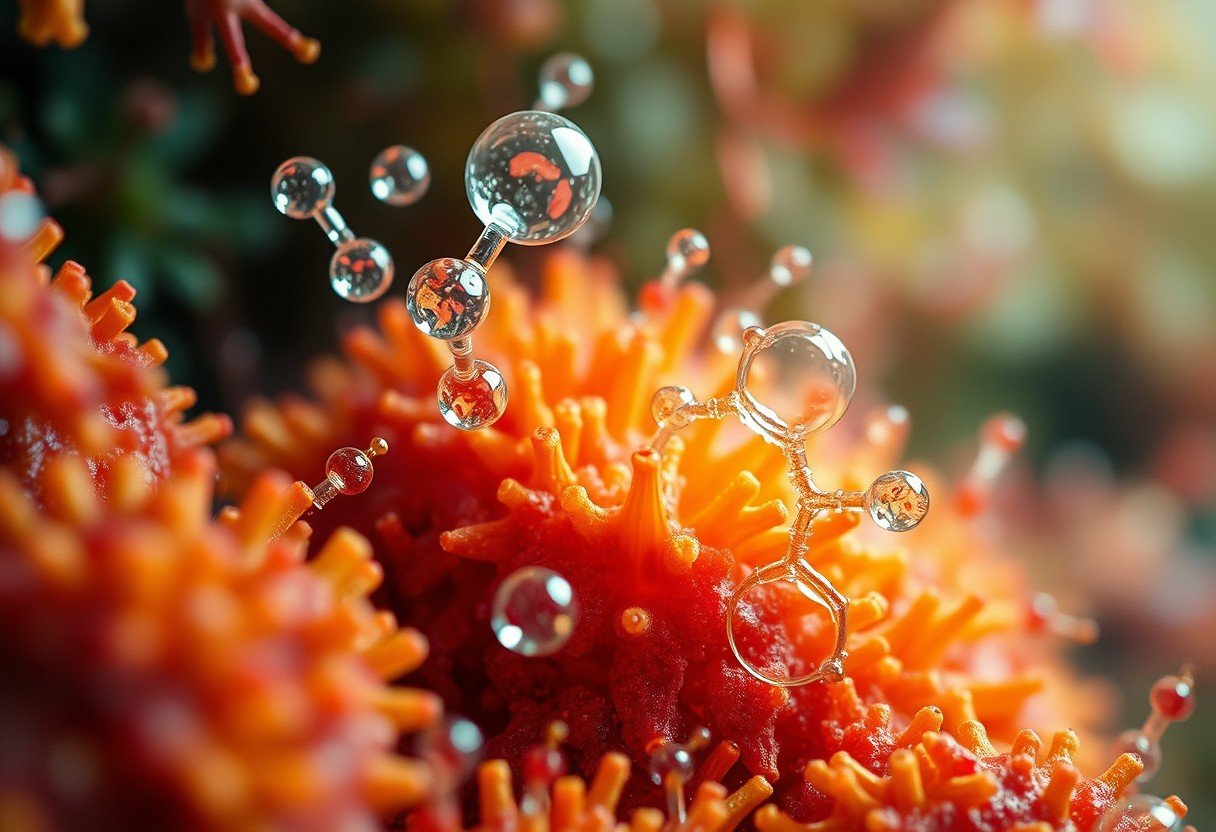Plastic assembly is a critical part of modern manufacturing, and the method used to join parts can impact cost, time, and product quality. Heat staking is a popular technology that uses heat and pressure to join components, with at least one part being thermoplastic. This process has become an industry standard because it eliminates the need for extra hardware like screws or adhesives, creating a strong, reliable bond efficiently and affordably. It’s a go-to solution for manufacturers looking to improve their assembly operations.
What Exactly is the Heat Staking Process?
At its core, the heat staking process is quite simple in concept. It involves joining two or more parts where at least one of them is made from a thermoplastic material. The plastic part is designed with a stud or boss that protrudes through a hole in the second part.
A heated tool, often called a thermal tip, is then applied to the plastic stud. The combination of heat and pressure melts and reforms the plastic stud into a new shape, like a rivet head. This new shape mechanically locks the two components together, forming a solid, permanent bond once it cools and solidifies.
The entire operation is remarkably efficient. Heat staking machines can complete all the necessary steps in a single motion and machine cycle. This makes it an incredibly fast and repeatable process, which is a huge advantage in high-volume production environments. Furthermore, since the heat is applied in a very specific, localized area, it doesn’t damage or warp the surrounding material.
This precision is especially important in electronic manufacturing. The process creates no mechanical stress or vibrations, which could harm delicate electronic components. This makes it a much safer alternative to other assembly methods.
The Cost and Time Efficiency of Heat Staking
One of the most significant reasons manufacturers switch to heat staking is its cost-effectiveness. The process eliminates the need for additional materials and consumables that are common in other assembly methods.
When you use heat staking, you are no longer purchasing, stocking, and handling extra parts. This leads to direct savings on:
- Hardware Fasteners: There is no need for screws, rivets, or clips, which can be costly and sometimes defective.
- Adhesives and Solvents: The process is clean and doesn’t require messy glues or bonding agents that need time to cure.
This reduction in materials not only cuts costs but also simplifies the supply chain and assembly line. Fewer parts mean fewer things can go wrong.
In manufacturing, time is money. Even shaving a few seconds off an assembly cycle can add up to huge gains in productivity over a week or a month. Because heat staking can be fully automated, cycle times are often reduced to just a few seconds. This speed significantly boosts production output without sacrificing quality.
Enhancing Product Durability and Reliability
A strong and lasting bond is crucial for the overall quality of a product. Heat staking excels at creating a durable connection that stands the test of time. The reformed plastic stud forms a solid mechanical interlock, which is often stronger than the base plastic material itself.
This method provides a reliable joint that is resistant to loosening from vibration, which can be a common problem with screw-based assemblies. You get a high-quality, dependable bond at a very reasonable price.
Furthermore, because the fastener is made of the same plastic material, there is no risk of corrosion that can occur when using metal hardware in harsh or humid environments. This inherent resistance to corrosion greatly extends the lifespan of the product. A longer-lasting product leads to happier customers and a better reputation for your company.
Different Staking Shapes for Custom Applications
Heat staking is not a one-size-fits-all solution. The technology is highly versatile, allowing for different stake shapes to be formed depending on the specific requirements of the application, such as the strength needed and the cosmetic appearance desired.
The shape of the thermal tip determines the final shape of the stake. This flexibility allows engineers to choose the perfect stake for their project, ensuring optimal performance and design integrity.
Here are some of the most common staking variants:
| Stake Type | Primary Use and Description |
| Standard Flared Stake | A general-purpose stake that provides good strength and is easy to produce. |
| Spherical Stake | Creates a neat, rounded appearance and is ideal for applications where aesthetics are important. |
| Hollow Stake | Used for larger studs. It forms a hollow ring, which is useful for retaining parts that may need to rotate. |
| Flush Stake | Creates a flat surface, ideal for applications where no protrusion is allowed for clearance or aesthetic reasons. |
| Knurled Stake | Adds a textured finish to the stake, which can increase its holding power through friction. |
Why Heat Staking is Safer for Delicate Components
Protecting sensitive components during assembly is a major concern, particularly in the electronics, medical, and automotive industries. Methods that create significant vibration, mechanical stress, or widespread heat can easily damage fragile parts like circuit boards or sensors.
Heat staking is a gentle process because the heat and pressure are concentrated in a very small, specific area. Only the plastic stud is melted, leaving the surrounding components and the base material unaffected. There is no shock or vibration transmitted through the assembly, which is a major risk with processes like ultrasonic welding.
This precise control ensures that delicate electronics are not exposed to any potential harm. This reliability plays a key role in reducing product failure rates and improving the overall quality of the final product, helping businesses maintain a strong reputation for producing dependable goods.
Frequently Asked Questions about Heat Staking
What materials can be used for heat staking?
The process requires at least one of the components to be made of a thermoplastic polymer. This includes common plastics like ABS, polypropylene, and polycarbonate. The other component can be made of various materials, including other plastics, metal, or circuit boards.
Is heat staking a permanent bond?
Yes, heat staking creates a permanent mechanical bond. The reformed plastic stud acts like a rivet, physically locking the parts together. The process is designed for assemblies that are not intended to be taken apart.
How does heat staking compare to ultrasonic welding?
Both are effective methods, but heat staking is often preferred for its lack of vibration, making it safer for delicate electronics. Heat staking also tends to be more cost-effective for simpler applications and can join plastics to non-plastic materials like metal, which ultrasonics cannot do.
What industries commonly use heat staking technology?
Heat staking is widely used across many industries due to its versatility and reliability. Key sectors include automotive for interior components, consumer electronics for assembling casings and circuit boards, and the medical device industry for creating tamper-proof assemblies.
Is the heat staking process messy?
Not at all. Since it does not use any adhesives, solvents, or other consumables, heat staking is a very clean process. There is no residue to clean up and no cure time required, which helps keep the manufacturing environment neat and efficient.









Leave a Comment